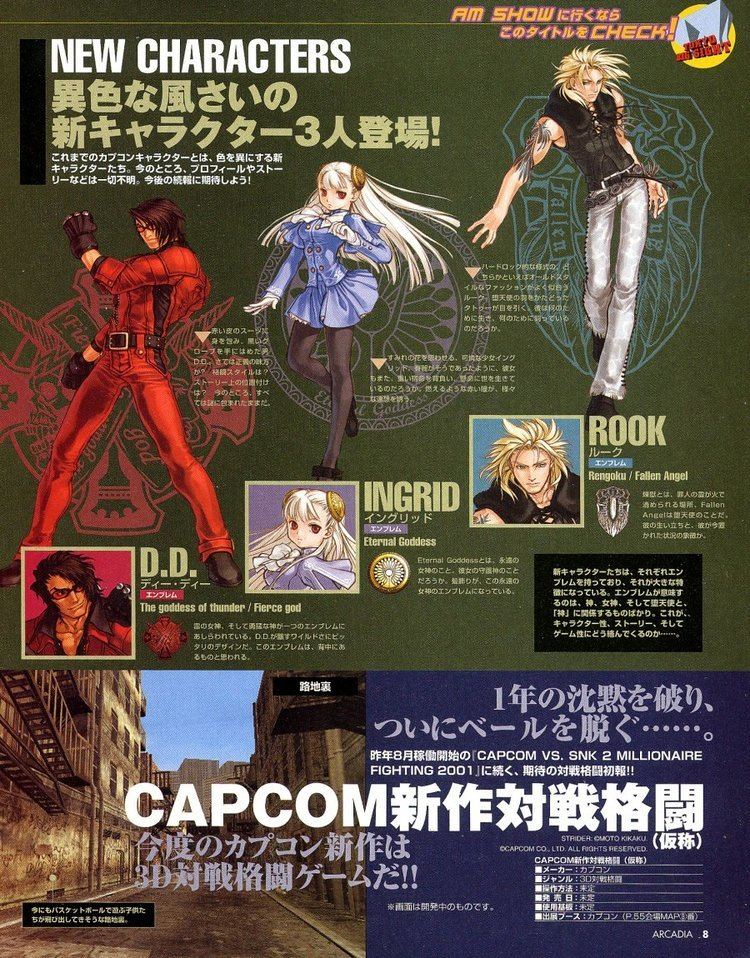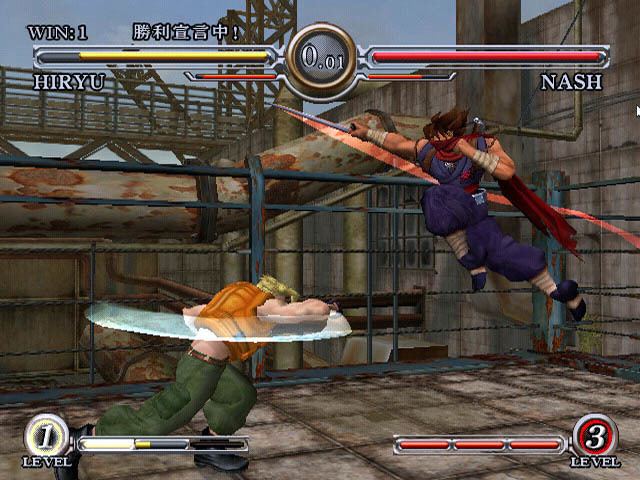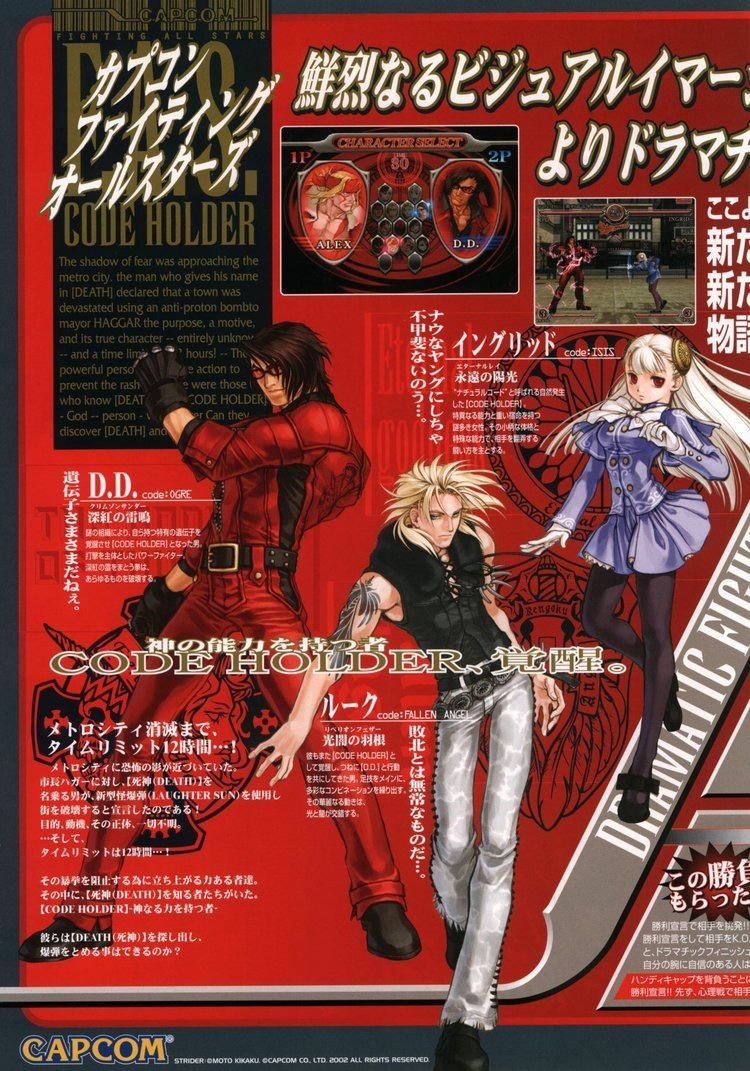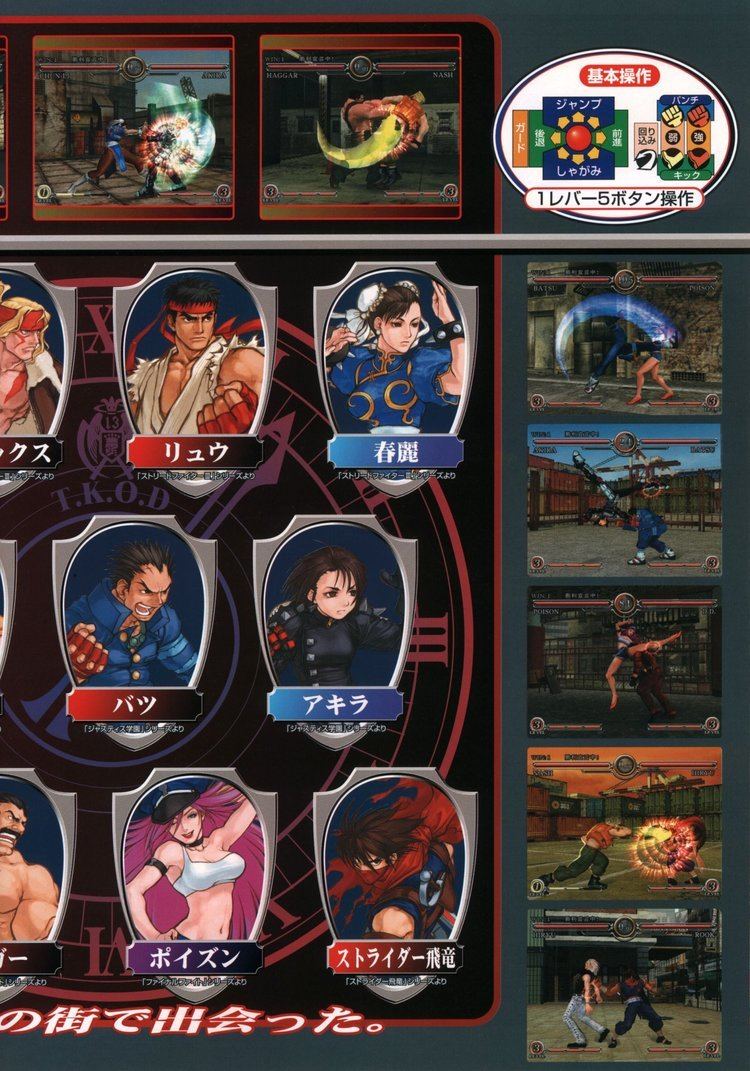Director(s) Toyohisa Tanabe | Developer Capcom | |
Release date(s) 2003 (limited beta test, eventually canceled) Similar Capcom Fighting Evolution, Marvel Super Heroes v, Street Fighter Alpha, Rival Schools: United by, Street Fighter III: 3rd Strike | ||
Capcom fighting all stars match footage collection
Capcom Fighting All-Stars: Code Holder was a 3D fighting game planned for the arcade and PlayStation 2 that was to be developed by Capcom. Like KOF: Maximum Impact, it was designed to translate a 2D fighting game series into 3D. This was done previously in the Street Fighter EX series, which Capcom co-produced with Arika. Capcom beta-tested the game, but after negative feedback from players and more months in development, the game was canceled in August 2003.
Contents
- Capcom fighting all stars match footage collection
- Gaming mysteries capcom fighting all stars ps2 arcade unreleased
- Returning characters
- New characters
- Story
- Legacy
- References

The life system was 3-tiered: if the player lost one tier, a break moment would occur and then the fight would resume, much like the life system in Vampire Savior. However the life system was also linked to the power bar: for each tier lost, a character gained an additional level in the Super Combo gauge (at full life, a character only has single-level super combo moves). Super arts were handled in three tiers, each super costing one, two, or three levels to use them.

Many parts of the system were later used in Capcom Fighting Evolution for Ingrid's gameplay and Capcom later revisited the concept of 2D fighters in 3D with the more traditional Street Fighter IV and Tatsunoko vs. Capcom.

Gaming mysteries capcom fighting all stars ps2 arcade unreleased
Returning characters
New characters
Story

Death was running around Metro City with a bomb called Laughter Sun. Mike Haggar called all above mentioned fighters to beat Death and defuse the bomb. To disarm it, codes were needed to be input. D.D., Rook, and Ingrid were the Code Holders, they had the codes that would deactivate the bomb. D.D. was the leader, Ingrid & Rook were his teammates. Their codes were Ogre, Fallen Angel and Isis.
Legacy

While the game never received an official release, the idea of Capcom's own characters in a crossover game would instead be used in the 2D fighting game, Capcom Fighting Evolution; released in 2004.
An original character slated to debut in All-Stars, Ingrid, would later appear in Capcom Fighting Evolution/Jam for the PlayStation 2 and Arcades. Ingrid would also appear in Street Fighter Alpha 3 MAX for the PlayStation Portable.
Two unique ideas were used in the game. The first idea was a "break" during the matches. This was to present a logical representation for things happening between rounds. The second idea was the "finishing move," a concept derived to be similar to that of the "Fatality" in Mortal Kombat. Neither idea has seen use in any subsequent Capcom games.
